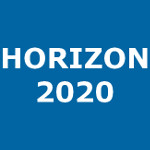Automatic assessment of the 2-minute walk distance for remote monitoring of people with multiple sclerosis
Kontaxis, Spyridon (Universidad de Zaragoza) ; Laporta, Estela ; Garcia, Esther ; Martinis, Matteo ; Leocani, Letizia ; Roselli, Lucia ; Buron, Mathias Due ; Guerrero, Ana Isabel ; Zabala, Ana ; Cummins, Nicholas ; Vairavan, Srinivasan ; Hotopf, Matthew ; Dobson, Richard J. B. ; Narayan, Vaibhav A. ; La Porta, Maria Libera ; Costa, Gloria Dalla ; Magyari, Melinda ; Sørensen, Per Soelberg ; Nos, Carlos ; Bailon, Raquel (Universidad de Zaragoza) ; Comi, Giancarlo
Resumen: The aim of this study was to investigate the feasibility of automatically assessing the 2-Minute Walk Distance (2MWD) for monitoring people with multiple sclerosis (pwMS). For 154 pwMS, MS-related clinical outcomes as well as the 2MWDs as evaluated by clinicians and derived from accelerometer data were collected from a total of 323 periodic clinical visits. Accelerometer data from a wearable device during 100 home-based 2MWD assessments were also acquired. The error in estimating the 2MWD was validated for walk tests performed at hospital, and then the correlation (r) between clinical outcomes and home-based 2MWD assessments was evaluated. Robust performance in estimating the 2MWD from the wearable device was obtained, yielding an error of less than 10% in about two-thirds of clinical visits. Correlation analysis showed that there is a strong association between the actual and the estimated 2MWD obtained either at hospital (r = 0.71) or at home (r = 0.58). Furthermore, the estimated 2MWD exhibits moderate-to-strong correlation with various MS-related clinical outcomes, including disability and fatigue severity scores. Automatic assessment of the 2MWD in pwMS is feasible with the usage of a consumer-friendly wearable device in clinical and non-clinical settings. Wearable devices can also enhance the assessment of MS-related clinical outcomes.
Idioma: Inglés
DOI: 10.3390/s23136017
Año: 2023
Publicado en: Sensors 23, 13 (2023), 6017 [11 pp.]
ISSN: 1424-8220
Factor impacto JCR: 3.4 (2023)
Categ. JCR: CHEMISTRY, ANALYTICAL rank: 34 / 106 = 0.321 (2023) - Q2 - T1
Categ. JCR: INSTRUMENTS & INSTRUMENTATION rank: 24 / 76 = 0.316 (2023) - Q2 - T1
Categ. JCR: ENGINEERING, ELECTRICAL & ELECTRONIC rank: 122 / 353 = 0.346 (2023) - Q2 - T2
Factor impacto CITESCORE: 7.3 - Instrumentation (Q1) - Information Systems (Q1) - Electrical and Electronic Engineering (Q1) - Analytical Chemistry (Q1) - Atomic and Molecular Physics, and Optics (Q1) - Biochemistry (Q2)
Factor impacto SCIMAGO: 0.786 - Instrumentation (Q1) - Analytical Chemistry (Q1) - Atomic and Molecular Physics, and Optics (Q1) - Information Systems (Q2) - Medicine (miscellaneous) (Q2) - Biochemistry (Q2) - Electrical and Electronic Engineering (Q2)
Financiación: info:eu-repo/grantAgreement/ES/DGA/T39-23R
Financiación: info:eu-repo/grantAgreement/EC/H2020/115902/EU/Remote Assessment of Disease and Relapse in Central Nervous System Disorders/RADAR-CNS
Financiación: info:eu-repo/grantAgreement/EUR/MICINN/TED2021-131106B-I00
Tipo y forma: Artículo (Versión definitiva)
Área (Departamento): Área Teoría Señal y Comunicac. (Dpto. Ingeniería Electrón.Com.)
 Debe reconocer adecuadamente la autoría, proporcionar un enlace a la licencia e indicar si se han realizado cambios. Puede hacerlo de cualquier manera razonable, pero no de una manera que sugiera que tiene el apoyo del licenciador o lo recibe por el uso que hace.
Debe reconocer adecuadamente la autoría, proporcionar un enlace a la licencia e indicar si se han realizado cambios. Puede hacerlo de cualquier manera razonable, pero no de una manera que sugiera que tiene el apoyo del licenciador o lo recibe por el uso que hace.
Exportado de SIDERAL (2024-11-22-12:09:32)
Visitas y descargas
Idioma: Inglés
DOI: 10.3390/s23136017
Año: 2023
Publicado en: Sensors 23, 13 (2023), 6017 [11 pp.]
ISSN: 1424-8220
Factor impacto JCR: 3.4 (2023)
Categ. JCR: CHEMISTRY, ANALYTICAL rank: 34 / 106 = 0.321 (2023) - Q2 - T1
Categ. JCR: INSTRUMENTS & INSTRUMENTATION rank: 24 / 76 = 0.316 (2023) - Q2 - T1
Categ. JCR: ENGINEERING, ELECTRICAL & ELECTRONIC rank: 122 / 353 = 0.346 (2023) - Q2 - T2
Factor impacto CITESCORE: 7.3 - Instrumentation (Q1) - Information Systems (Q1) - Electrical and Electronic Engineering (Q1) - Analytical Chemistry (Q1) - Atomic and Molecular Physics, and Optics (Q1) - Biochemistry (Q2)
Factor impacto SCIMAGO: 0.786 - Instrumentation (Q1) - Analytical Chemistry (Q1) - Atomic and Molecular Physics, and Optics (Q1) - Information Systems (Q2) - Medicine (miscellaneous) (Q2) - Biochemistry (Q2) - Electrical and Electronic Engineering (Q2)
Financiación: info:eu-repo/grantAgreement/ES/DGA/T39-23R
Financiación: info:eu-repo/grantAgreement/EC/H2020/115902/EU/Remote Assessment of Disease and Relapse in Central Nervous System Disorders/RADAR-CNS
Financiación: info:eu-repo/grantAgreement/EUR/MICINN/TED2021-131106B-I00
Tipo y forma: Artículo (Versión definitiva)
Área (Departamento): Área Teoría Señal y Comunicac. (Dpto. Ingeniería Electrón.Com.)
Exportado de SIDERAL (2024-11-22-12:09:32)
Enlace permanente:
Visitas y descargas
Este artículo se encuentra en las siguientes colecciones:
Artículos > Artículos por área > Teoría de la Señal y Comunicaciones
Registro creado el 2023-07-28, última modificación el 2024-11-25
